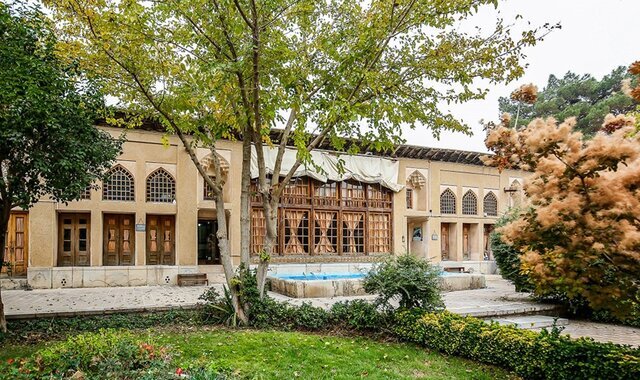Historical mansion, now brocade weaving center, to be ceded to private sector

TEHRAN –The historical Sheikh al-Islam Mansion, which is a center for Zaribafi (‘Brocade weaving’) in the central city of Isfahan is planned to be ceded to the private sector, a local tourism official has said.
The historical building, which can be considered a museum of traditional arts, will be transferred to the private sector for improved maintenance, Nurollah Abdollahi explained on Saturday.
Brocade is a class of richly decorative shuttle-woven fabrics, often made in colored silks and with or without gold and silver threads. Brocade is typically woven on a drawloom. It is a supplementary weft technique; that is, the ornamental brocading is produced by a supplementary, non-structural, weft in addition to the standard weft that holds the warp threads together. The purpose of this is to give the appearance that the weave was embroidered on.
Ornamental features in brocade are emphasized and wrought as additions to the main fabric, sometimes stiffening it, though more frequently producing on its face the effect of low relief. In some, but not all, brocades, these additions present a distinctive appearance on the back of the material where the supplementary weft or floating threads of the brocaded or broached parts hang in loose groups or are clipped away. When the weft is floating on the back, this is known as a continuous brocade; the supplementary weft runs from selvage to selvage. The yarns are cut away in cutwork and broché. Also, a discontinuous brocade is where the supplementary yarn is only woven in the patterned areas.
Soaked in a rich history and culture, Isfahan was once a crossroads of international trade and diplomacy in Iran. Now, it is one of Iran’s top tourist destinations for good reasons. The ancient city is filled with many architectural wonders such as unmatched Islamic buildings, bazaars, museums, Persian gardens, and tree-lined boulevards. It’s a city for walking, getting lost in its mazing bazaars, dozing in beautiful gardens, and meeting people.
The city has long been nicknamed as Nesf-e-Jahan which is translated into “half the world”; meaning seeing it is relevant to see the whole world. In its heyday, it was also one of the largest cities in the region with a population of nearly one million.
Isfahan is renowned not only for the abundance of great historical bridges but also for its ‘life-giving river’, the Zayandeh-Rood, which has long bestowed the city an original beauty and fertility. The cool blue tiles of Isfahan’s Islamic buildings, and the city’s majestic bridges, contrast perfectly with the encircling hot, dry Iranian countryside.
The huge Imam Square, best known as Naghsh-e Jahan Sq. (literary meaning “Image of the World”), is one of the largest in the world (500m by 160m), and a majestic example of town planning. Built in the early 17th century, the UNESCO-registered square is punctuated with the most interesting sights in Isfahan. Modern Isfahan is now home to some heavy industry, including steel factories and a nuclear facility on its outskirts, however, its inner core wants to be preserved as a priceless gem.
ABU/AM
Leave a Comment